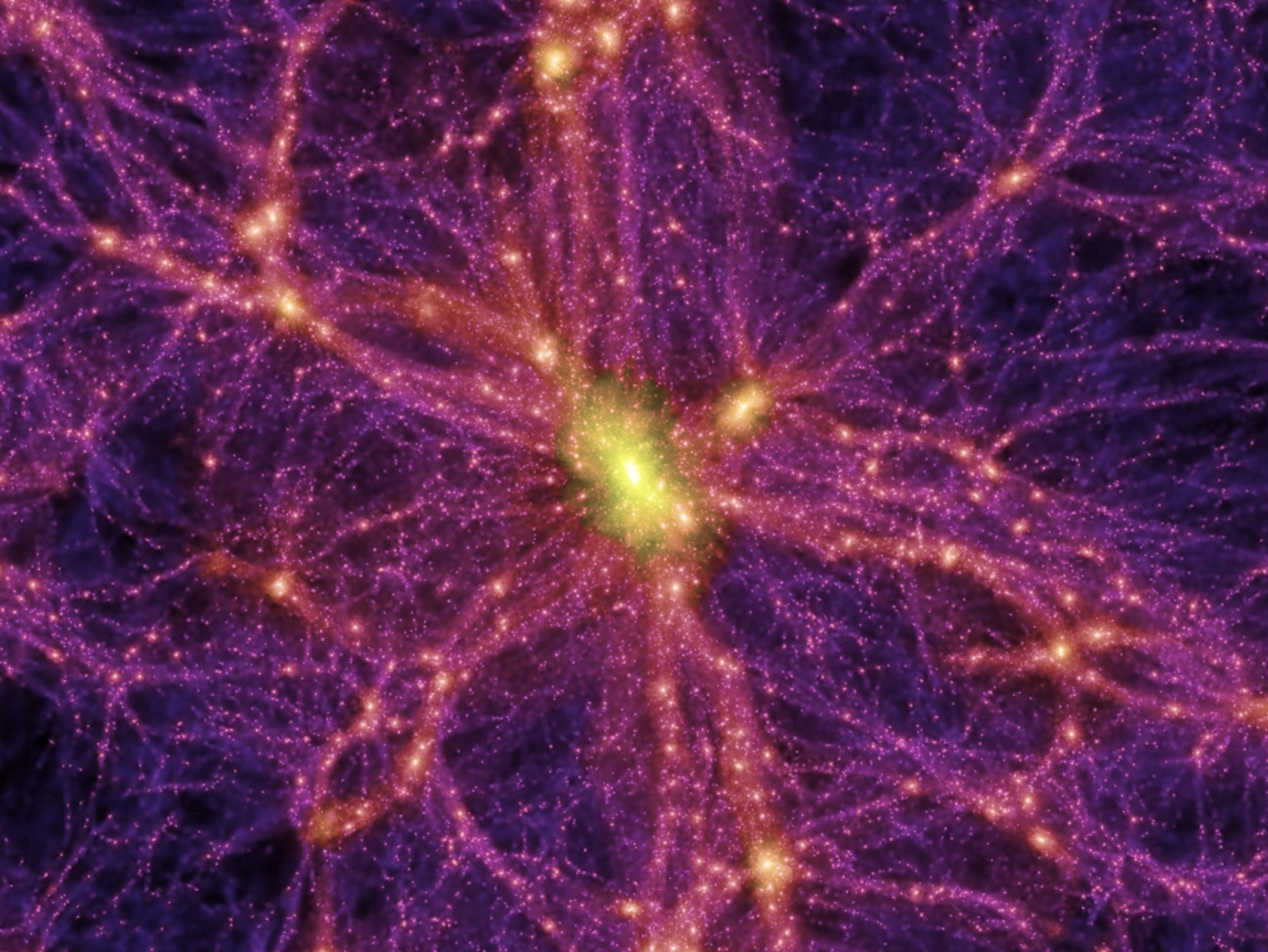
Dark Energy Analysis: New Insights into the Universe
Dark energy is one of the most intriguing forces in the universe, playing a crucial role in the cosmos’ ongoing expansion. Recent research from the Dark Energy Spectroscopic Instrument (DESI) collaboration has stirred exciting discussions within the astrophysics community, suggesting that this mysterious energy, often associated with the cosmological constant, might not be as constant as previously believed. With implications for galaxy evolution and the overall fate of the universe, these findings could reshape our understanding of cosmic dynamics. By analyzing over 14 million galaxies, DESI aims to map the effects of dark energy over billions of years, enhancing our grasp of how this enigmatic force influences the universe’s expansion. As researchers delve deeper into the complexities of dark energy, they are setting the stage for groundbreaking advancements in cosmology and astrophysics research.
Cosmic force often thought of as driving the accelerated expansion of the universe is commonly termed dark energy. As scientists engage in extensive astrophysical research, new insights reveal the potential variability of this constant force, prompting reevaluations of established concepts in cosmology. The Dark Energy Spectroscopic Instrument (DESI) initiative, a landmark global collaboration, seeks to uncover the intricate relationship between matter and this cosmic force through detailed analysis of galaxy distributions across time. The revelations concerning this energy’s evolving nature also hint at new narratives surrounding the fate of our universe. By leveraging cutting-edge techniques and massive datasets, the investigation into this cosmic phenomenon invites a renaissance of understanding in the field of astrophysics.
Understanding Dark Energy: The Force Behind Universe Expansion
Dark energy is a mysterious force that plays a critical role in the expansion of the universe. It is hypothesized to account for approximately 68% of the universe’s total energy density, driving galaxies to move away from each other at an accelerating rate. This enigmatic component has garnered significant attention in the field of astrophysics, as scientists strive to unravel its nature and implications. The recent findings from the Dark Energy Spectroscopic Instrument (DESI) collaboration suggest that dark energy may not be a constant but could evolve over time, raising important questions about our understanding of cosmic expansion.
The notion of dark energy as a cosmological constant has dominated theoretical physics, initially introduced by Albert Einstein in the early 20th century. However, if this force is indeed changing, it could dramatically alter our models of the universe. Researchers are increasingly focusing on measuring its effects through observational studies, such as those conducted by the DESI project, which maps the distribution of galaxies and quasars. By analyzing these patterns, scientists can infer the strength and behavior of dark energy across various epochs, leading to a deeper comprehension of how it influences the cosmos.
The Role of DESI in Cosmic Research
The Dark Energy Spectroscopic Instrument (DESI) is a groundbreaking initiative that utilizes advanced technology to map the universe in unprecedented detail. With its ability to record the spectra of millions of celestial objects, DESI provides invaluable data essential for understanding the evolution of galaxies and the structure of the cosmic web. This large-scale survey not only enhances our knowledge of dark energy but also sheds light on broader aspects of astrophysics, including galaxy formation and the behavior of matter across vast distances.
Collaboration among over 900 researchers from more than 70 institutions worldwide propels the DESI project forward, making it one of the most significant undertakings in modern cosmology. The years of data collected and analyzed offer insights into the patterns of baryon acoustic oscillations, which help measure expansion rates and the influence of dark energy throughout the universe’s history. The contributions from teams at institutions like the Center for Astrophysics at Harvard and Smithsonian have been instrumental in ensuring the accuracy and impact of these findings, paving the way for further exploration into the fabric of the universe.
Observational Evidence: Mapping the Universe’s Past
Recent studies of cosmic history have revealed that the universe’s expansion has had varied rates at different times. The DESI collaboration’s innovative approach involves examining the distribution of matter—specifically, the baryonic acoustic oscillations that serve as a standard ruler. By observing how these oscillations have changed over 11 billion years, scientists can build a clearer picture of dark energy’s role and how it may be evolving. This observational evidence is crucial for testing existing theories about cosmic inflation and the ultimate fate of the universe.
The intricate mapping produced by the DESI survey allows researchers to assess the influence of dark energy on galaxy clusters and cosmic structures across time and space. By synthesizing data from over 14 million galaxies and quasars, scientists derive insights that enhance our understanding of galaxy evolution and the underlying principles of astrophysics. Such investigations are vital for shaping theoretical frameworks that describe the universe, potentially leading to new paradigms in cosmology.
The Cosmological Constant and Its Implications
The cosmological constant, a key feature of Einstein’s theory of general relativity, has historically been used to explain the observed acceleration in the expansion of the universe. This foundational concept suggests that dark energy is a constant energy density that fills space homogeneously. However, with the findings from DESI indicating a possible evolution in dark energy, scientists may have to reassess the cosmological constant’s validity. This paradigm shift could have profound implications for our understanding of the universe’s fate as well as the properties of the fundamental forces at play.
Incorporating the possibility that dark energy is not static but may fluctuate challenges astrophysicists to consider alternative models. As researchers continue to gather and analyze data from ongoing surveys like DESI, they aim to refine theories surrounding the cosmological constant. Insights derived from these studies not only advance our knowledge of dark energy but also inspire broader investigations into the nature of space and time, ultimately enhancing our grasp of the cosmos.
Looking Ahead: The Future of Astrophysics Research
The unveiling of MORE data from the Dark Energy Spectroscopic Instrument offers new horizons for astrophysics research. With Data Release 1 made publicly accessible, researchers around the globe can dive into this treasure trove of information to explore various celestial phenomena, including the cosmic web and galaxy formation. As more scientists engage with the DESI dataset, collaborative efforts will likely lead to groundbreaking discoveries that could reshape our understanding of the universe.
Moreover, addressing the intricacies of dark energy and its implications on cosmic evolution will remain a focal point in upcoming astrophysics research. This endeavor not only aims to decode the fundamental mechanics of the universe but also enhances educational outreach to inspire future generations of scientists. The DESI collaboration exemplifies the power of global teamwork in enhancing our collective understanding of space; as data flows in, the opportunities for new theoretical and observational breakthroughs abound.
Astrophysical Implications of Dark Energy Evolution
The potential evolution of dark energy has significant implications for the models predicting the universe’s future. If dark energy weakens over time, it may halt the current acceleration, leading to a gradual deceleration of cosmic expansion. Conversely, if dark energy strengthens, it could push the universe towards a more rapid expansion phase, fundamentally altering the fate of all cosmic structures. Scientists are keenly investigating these scenarios, as the outcome could dictate the long-term evolution of the cosmos, possibly culminating in phenomena like the Big Rip.
Researchers emphasize that the impact of dark energy on cosmic structures such as galaxies is multifaceted. By studying how dark energy interacts with matter, scientists may uncover foundational truths about the universe. The continued collaboration by institutions under DESI aims to provide a deeper understanding of these dynamics, allowing astrophysicists to refine their models and predictions, crucial for grasping the complexities governing the universe’s destiny.
Significance of Baryon Acoustic Oscillations in Dark Energy Research
Baryon Acoustic Oscillations (BAOs) have emerged as a vital component in understanding dark energy’s influence on the universe’s expansion. These oscillations, remnants from the hot plasma that filled the early universe, serve as an excellent standard ruler for measuring distances. By analyzing the patterns of BAOs observed in the large-scale structure of the universe, scientists can track the expansion history and quantify the effects of dark energy. The DESI collaboration leverages this phenomenon to provide a more reliable metric for assessing dark energy’s changing role.
Furthermore, the significance of BAOs extends beyond dark energy research as they contribute to our overall understanding of cosmological parameters. By calibrating how these oscillations reflect the universe’s expansion rates, researchers gather insights into the primordial effects of dark energy. As more data is collected and analyzed, the relationship between BAOs and dark energy will help clarify our broader cosmological models, potentially uncovering new layers of cosmic history.
Public Outreach and Education in Astrophysics
Efforts to engage the public and disseminate information about dark energy and cosmological research are crucial to fostering interest in science and technology. Through the DESI collaboration, significant strides have been made to improve public understanding of complex topics like dark energy and galaxy evolution. Educational materials crafted by team members, including infographics and interactive resources, serve to encapsulate intricate scientific concepts in an accessible manner. Such initiatives aim to inspire future generations of scientists and educators.
Outreach programs that incorporate the new findings on dark energy not only enhance public awareness but also promote dialogue about cosmic phenomena. By showcasing real-time discoveries and inviting participation in data exploration, initiatives like those from DESI can empower individuals to engage with science. These efforts establish a bridge between technical research and public comprehension, illustrating the importance of collaborative work in astrophysics and its relevance to understanding our universe.
The Future of the Universe: Scenarios and Predictions
As researchers dive deeper into the complexities of dark energy, a plethora of scenarios about the universe’s ultimate fate emerge. Current theories, largely influenced by the behaviors observed through the DESI collaboration’s research, posit various outcomes ranging from continued expansion to potential cosmic contractions. Understanding how dark energy may evolve over time will be critical in providing clarity regarding the universe’s fate, addressing pivotal questions about its lifecycle.
Astrophysicists suggest multiple paths the universe could take, informed by ongoing observations and theoretical advancements. These scenarios, grounded in empirical research and predictive modeling, offer fascinating insights into cosmic destiny. Whether it leads to a Big Freeze, Heat Death, or an entirely different conclusion, the evolution of dark energy remains at the forefront of this inquiry, guiding scientists as they seek to decode the universe’s mysteries.
Frequently Asked Questions
What is dark energy and how does it relate to the cosmological constant?
Dark energy is a mysterious force thought to be responsible for the accelerated expansion of the universe. It is often associated with the cosmological constant, a term introduced by Albert Einstein in his equations of general relativity. Current research, such as that conducted by the DESI collaboration, indicates that dark energy may be evolving, challenging traditional views linked to the cosmological constant.
How does the Dark Energy Spectroscopic Instrument (DESI) help in understanding dark energy?
The Dark Energy Spectroscopic Instrument (DESI) plays a critical role in measuring dark energy by creating the largest 3D map of the universe. Through its analysis of over 14 million galaxies and quasars, DESI tracks the distribution of matter and observes the impact of dark energy over billions of years, allowing researchers to gauge its effects comprehensively.
What evidence is there that dark energy may be changing over time?
Recent findings from the DESI collaboration suggest that dark energy might be weakening or evolving, differing from the previously held belief that it remains constant. Analyzing Baryon Acoustic Oscillations in the universe’s early matter distribution provides vital clues about how dark energy’s influence may have shifted over the past 11 billion years.
In what ways does dark energy affect galaxy evolution?
Dark energy influences the accelerated expansion of the universe, which impacts galaxy evolution by affecting how galaxies cluster and interact over time. This is a critical area of study for astrophysics research, as understanding dark energy’s role may provide insights into the life cycle and formation of galaxies throughout cosmic history.
What are the implications of dark energy research for the future of the universe?
Research on dark energy, particularly findings from DESI, has profound implications for the future of the universe. If dark energy is evolving, this could mean a revision of the standard model of cosmology which impacts our understanding of the universe’s fate, including its expansion rate and ultimate collapse or continual growth.
How does the DESI collaboration contribute to our understanding of astrophysics?
The DESI collaboration comprises over 900 researchers and contributes significantly to astrophysics by elucidating dark energy’s role in cosmic expansion. By mapping galaxies and providing accessible data for public exploration, DESI enhances our understanding of not only dark energy but also galaxy formation, the cosmic web, and overall universe dynamics.
Why is measuring Baryon Acoustic Oscillations important for studying dark energy?
Measuring Baryon Acoustic Oscillations is crucial as it acts as a cosmic ruler, helping astronomers determine the expansion rate of the universe at different epochs. This measurement directly influences our understanding of dark energy’s strength and behavior throughout cosmic history, providing essential insights into its characteristics.
| Key Points | Details |
|---|---|
| Dark Energy Analysis | The DESI collaboration is investigating dark energy’s role in the universe’s accelerating expansion and its potential weakening over time. |
| Historical Impact | The study analyzed dark energy’s influence over the last 11 billion years using the largest 3D map of the universe created to date. |
| Baryon Acoustic Oscillations | These patterns in matter distribution serve as a ‘standard ruler’ to measure the strength of dark energy through cosmic history. |
| Collaboration Efforts | Involving over 900 researchers globally, the DESI project combines data from 14 million galaxies and quasars. |
| Further Research Opportunities | Data Release 1 provides extensive datasets for exploring galaxy evolution and other astrophysical phenomena, enhancing our understanding of dark energy. |
Summary
Dark energy is a fundamental aspect of our universe that influences its accelerating expansion. Recent findings from the Dark Energy Spectroscopic Instrument (DESI) suggest that dark energy may be changing over time, which could necessitate a revision of our current cosmological models. With contributions from an international team of researchers, including those from Harvard University, this ongoing research not only aids in understanding dark energy but also opens new avenues for astrophysical studies through comprehensive data analysis.


